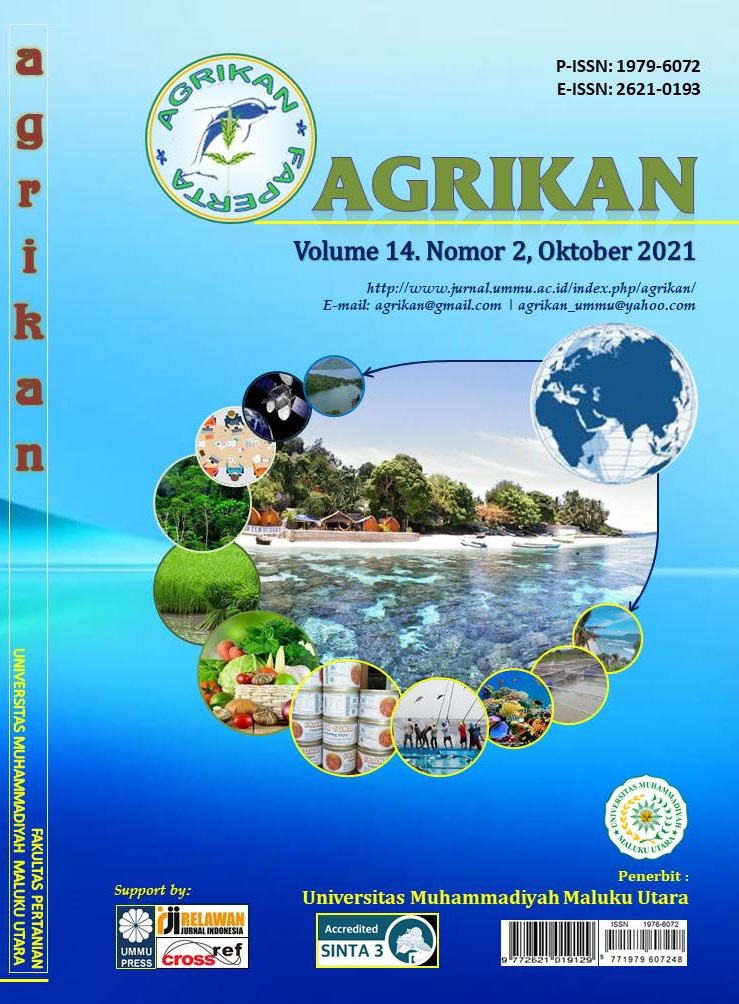Pole and Line Fishery Sustainability Status Based on Business Feasibility At the Bacan Coastal Fishing Port, South Halmahera Regency
DOI:
https://doi.org/10.52046/agrikan.v14i2.784Keywords:
Sustainability status, pole and fishery, based on business Feasibility, BacanAbstract
This study aims to analyze the feasibility of the huhate fishery business which consists of financial and investment analysis. Financial analysis is limited to determine the level of operating income (profit = ). While investment analysis includes; net benefit cost ratio (Net B/C), return on investment (ROI), break even point (BEP), and payback period (PP). The results showed that financially (profits) and investment (Net B/C, IRR, BEP, and PP) the huhate fishery business on KM Mina Maritim 145 vessels with a capacity of 30 GT and KM Inka Mina 520 with a capacity of 37 GT was feasible to be operated throughout the year. The profit value of the huhate fishery business on the KM Mina Maritim 145 ship with a capacity of 30 GT in one year is Rp. 535,304,400,00, Net B/C ratio 1,52, IRR 40%, BEP Rp. 2,916,265,599.96, and PP 2.36 years. The profit value of the huhate fishery business on the KM Inka Mina 520 vessel with a capacity of 37 GT in one year is Rp. 564,476,400.00, Net B/C ratio 1.10, IRR 34%, BEP Rp. 3,222,133,599.96, and PP 2.86 years. Based on the feasibility of business, the fishing business of the two ships has high sustainability.Downloads
Published
22-09-2021
Issue
Section
Articles
License
Copyright (c) 2021 Adi Noman Susanto, Bahar Kaidati, Amirul Karman

This work is licensed under a Creative Commons Attribution 4.0 International License.

This work is licensed under a Creative Commons Attribution 4.0 International License.
How to Cite
Pole and Line Fishery Sustainability Status Based on Business Feasibility At the Bacan Coastal Fishing Port, South Halmahera Regency. (2021). Agrikan Jurnal Agribisnis Perikanan, 14(2), 278-285. https://doi.org/10.52046/agrikan.v14i2.784













